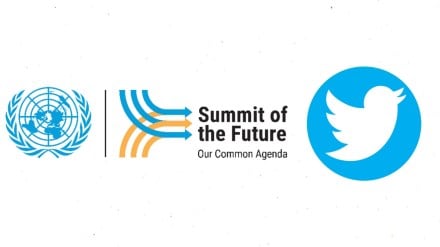In a groundbreaking development, world leaders have adopted the `Pact for the Future’, an ambitious and far-reaching agreement designed to reshape global governance for the challenges of the 21st century. The pact includes two transformative frameworks—the `Global Digital Compact’ and the `Declaration on Future Generations’—which aim to ensure international cooperation remains fit for purpose in an increasingly complex world.
Described as the most significant international agreement in decades, the pact addresses both new global issues and long-standing ones that have eluded consensus. “We cannot create a future fit for our grandchildren with a system built by our grandparents,” said United Nations Secretary-General António Guterres during the Summit of the Future, underscoring the need for transformative reforms.
Reaffirming Global Cooperation
At its core, the `Pact for the Future’ reaffirms the international community’s commitment to the principles of the United Nations and international law, setting the stage for a more representative and effective global system. The Secretary-General highlighted how the pact “opens the door to new opportunities and untapped possibilities” in global governance, and the President of the General Assembly noted that it would “lay the foundations for a sustainable, just, and peaceful global order.”
The pact stands as a collective vision for an international system that can not only deliver on its promises but also adapt to the current global realities. This vision relies heavily on the collaboration of governments, civil society, and key international partners.
Key Deliverables in Peace and Security
A major component of the pact focuses on enhancing global peace and security, with an unprecedented commitment to reforming the United Nations Security Council. The pact outlines plans to make the council more effective and representative, with particular attention given to correcting the historical under-representation of Africa. This marks the most significant step toward reform since the 1960s.
In addition, the pact recommits to nuclear disarmament, a goal that has been largely stagnant for over a decade. Leaders pledged to work toward the total elimination of nuclear weapons. Another key achievement is the agreement to strengthen international regulations governing outer space, aiming to prevent an arms race and ensure that space exploration remains safe and accessible for all nations.
A forward-looking provision addresses the emerging threats posed by new technologies, particularly lethal autonomous weapons. The pact stresses that international law, including the laws of war, should apply to such technologies, ensuring they are not misused or weaponized.
Sustainable Development, Climate, and Financial Reforms
The `Pact for the Future’ aims to supercharge the implementation of the United Nations‘ Sustainable Development Goals (SDGs). A major component of the pact focuses on reforming the global financial architecture, particularly to better serve developing nations. These reforms include giving developing countries a greater voice in international financial institutions and mobilizing financing from multilateral development banks to meet their development needs.
One key agreement is to review the sovereign debt framework to ensure sustainable borrowing by developing nations, with cooperation from institutions like the IMF, UN, and G20. The pact also outlines steps to strengthen the global financial safety net to protect the poorest countries in the event of financial shocks. There is a strong emphasis on mobilizing more resources to combat climate change, including increased funding for renewable energy projects and adaptation measures to protect vulnerable nations.
Crucially, the pact calls for innovative approaches to measuring progress beyond GDP, emphasizing human and planetary well-being and sustainability. It also signals the possibility of introducing a global minimum tax for high-net-worth individuals as part of broader financial reforms.
On climate change, the pact reinforces the global commitment to limit temperature rise to 1.5°C above pre-industrial levels and to transition away from fossil fuels, with the goal of achieving net-zero emissions by 2050.
The Global Digital Compact: A New Era of Digital Cooperation
A key annex to the `Pact for the Future’ is the `Global Digital Compact’, which represents the first comprehensive global framework for digital cooperation and the governance of artificial intelligence. The compact is built on the principle of designing, using, and governing digital technologies for the common good.
Among its commitments, the compact aims to connect all people, schools, and hospitals to the internet, ensuring that digital infrastructure reaches the most underserved populations. Another focus is on making the online space safer, particularly for children, through collaborative efforts by governments, tech companies, and social media platforms.
Furthermore, the compact addresses AI governance, laying out a roadmap that includes the creation of an International Scientific Panel and a Global Policy Dialogue on AI. A significant milestone is the first-ever global commitment to data governance, ensuring that by 2030, countries will take concrete steps to manage and share data more openly and transparently.
Ensuring the Voice of Youth and Future Generations
The Declaration on Future Generations, has been introduced which takes concrete steps to include the interests of future generations in current decision-making. The declaration proposes appointing an envoy for future generations and committing to increased youth participation in global governance. This is intended to provide young people with more meaningful opportunities to shape the policies that will affect their future.
Strengthening Human Rights and Gender Equality
Human rights and gender equality are central pillars of the pact. It reinforces the importance of protecting human rights defenders and advancing gender equality globally. The agreement also calls for the engagement of a wide range of stakeholders, including local governments, civil society, and the private sector, in shaping global governance.
Looking Ahead: Implementing the Pact
The adoption of the pact follows an inclusive summit process, which brought together over 4,000 representatives from governments, intergovernmental organizations, civil society, and the private sector. Additionally, Action Days, which took place just prior to the summit, saw commitments to action from over 7,000 stakeholders and the pledge of over $1 billion toward advancing digital inclusion.
